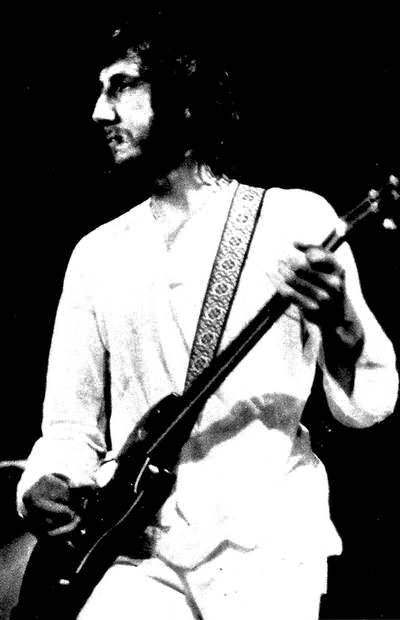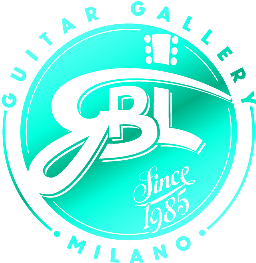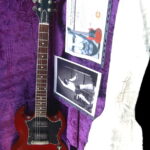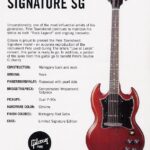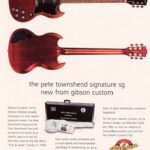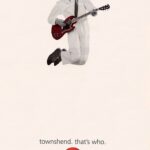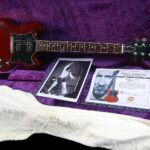Gibson SG Special
Pete Townshend and the Gibson SG Special guitar
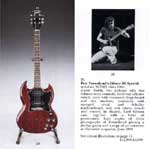
Introduction
The guitar model Pete Townshend used (and abused) exclusively on stage from mid-late 1968 until 1971, and the guitar with which he’s most famously associated. This guitar model was used for the famous late ’60s/early ’70s live recordings, including Woodstock, Live at Leeds and Isle of Wight, as well as the recordings of Tommy and The Seeker.
First Use
The earliest appearance of Pete’s use of the Gibson SG Special (other than one he borrowed in 1966 from a support group the Tages) is July 1968, likely purchased at Manny’s Music (archived), New York, though regular use wouldn’t come until late 1968. Throughout his use of this guitar from 1968–1971, he usually used 1966–1970 models, which feature the full black wraparound pickguard. He did, however, occasionally use pre-1966 models, which feature the small pickguard, especially in 1971 as the available supply began to dry up. In all, Pete likely went through dozens of these guitars between 1969 and 1971.
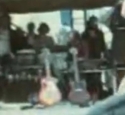
End of the line
Pete stopped using the 1966–1970 cherry-finish model SG Special guitars after 1971 when Gibson had changed the production specification and the existing supply dried up.
The last known use of a 1966–1970 cherry-finish model SG Special came at the 9 September 1972 Paris gig.
The Signature Pete Townshend Gibson SG Special
In 2000, Gibson issued a signature Pete Townshend Gibson SG Special to commemorate this guitar.
In 2011, Gibson issued a 50th Anniversary Pete Townshend SG Special in Alpine White to commemorate the 50th anniversary of the Gibson SG and Pete’s later use of Polaris White Gibson SG Specials.
Specifications
Gibson SG Special Details:
- One-piece mahogany body and one-piece set neck, cherry finish.
- Full black pickguard (1966–1970 models) or small black pickguard (1962–1965 models), white binding.
- Bound dot inlay neck with rosewood fingerboard.
- Schaller or Grover tuners. Nickel or Chrome-plated hardware.
- P-90 “soapbar” pickups.
Pete’s Modifications:
- Stock Gibson/Maestro Vibrola vibrato tailpiece removed (leaving visible screw holes).
- Strings attached directly to wraparound — or stop — “stairstep” tailpiece (bridge is not the Gibson Tune-O-Matic).
Gibson 340 Sonomatic strings, .012, .016, .016, .032, .044, .056.
Setup
In his standard setup from December 1968 through 1971 (and then on and off until 1973 as he experimented with Gibson Les Paul Deluxes and other guitars, before returning briefly to Polaris White Gibson SG Specials), Pete used Cherry Red Gibson SG Specials plugged into a Univox Super Fuzz pedal, then into his Sound City as Hiwatt or Hiwatt “stack.”

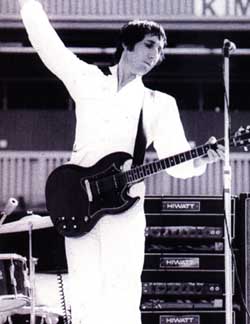
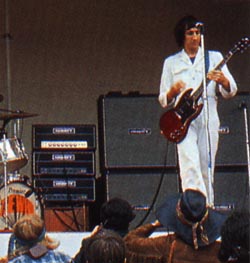
Generic Gibson SG Specials
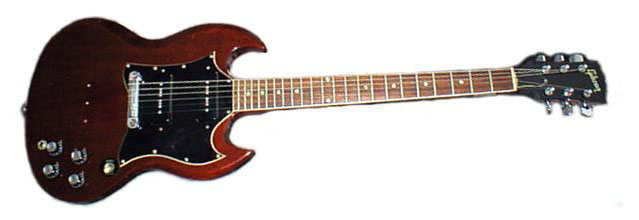

Selected quotes from Pete Townshend
All quotes and references are copyright their original owners and are included for reference only.

From April 1980 issue of Sound International article, courtesy Joe G’s site.
- PT: Henry [Goldrich] at Manny’s (music store in New York) introduced me to a guitar which had just come out. I don’t know what you call them; it was a thin crimson-coloured guitar…
- SI: The SG?
- PT: Right. They just brought out a new model and this was in 1968 and it had a slightly larger wound pickup and it really suited my amplifiers. I started to use those and they were a bit weak, which was the only problem; I could actually break them with my bare hands. But that’s when I started to develop that technique because you didn’t need a tremolo arm. You could do it by just shaking the guitar. I got into this thing also of temper tuning the guitar with the second string flat, and pulling back slightly on the guitar all the time to bring it into pitch. So using that on some of the higher chords where you wanted that second string to voice a bit flat, you could relax the guitar and it would come out a bit flatter. No, sorry, I meant the G string. When you’re using a lighter G — I’ve never used light gauge strings. I’ve always used heavy strings — you can do that. The top string (high E) is an .012 downwards and I use two Bs instead of a B and a G string. I got that from Jimmy Burton, that’s what he used to use. I can’t stand light strings, you don’t have to struggle for it. Mickie Green, who is a guy who used to play with Johnny Kidd and The Pirates, was a great experimenter with the Jimmy Burton technique. He used to have this great lyrical string bending thing going on and I went up to him one day and said, ‘What kind of strings do you use?’ and he said, ‘What?’ And I said, ‘Do you have a plain third?’ And he said, ‘A plain what?’ He just had big hands; he used to bend the third, a wound third, right up and over the back of the neck. That was an affirmation to me that if you wanted to do it you fought for it. I hate that guitar sound where people sound like they can bend the string just by kind of thinking about it.
It fitted my sound and had a lyrical quality to it because the neck was so uncluttered at the top you could play high.
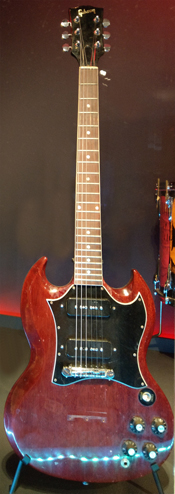
From May/June 1972 Guitar Player
- GP: What about the Gibson SG, has anything been done to that?
- PT: Well, the SG story is a bit disappointing. The first time I started to use the Gibson SG model guitar is when I got fed up with Fenders, because they were too clean, but I liked them because they were tough. In guitar smashing days, the Fender would last two or three shows and ten minutes if I wanted to smash it up. And I was into Jimi Hendrix, it was a fuzz box number. It was clean until you hit the fuzz box and then it was dirty. So I went to the manager and said I really need an alternative to this and he said I think you’d like the newest SG and I looked at it. I played it and it rang, it sang to me, not humbucking pickups, the plain pickups, and I’ve used SG’s ever since. They took the old SG off the market like about a year ago, so we used up every old SG in the country. I don’t break them deliberately any more, but when I spin them around, when I’ve had a few drinks, I bang them and they crack and they break. They’re made out of really light wood, it’s a light guitar. That thing I do with the neck (bending it back to stretch the strings as the chord rings) you don’t need any strength to make the whole guitar bend, because it’s made out of such a light-weight wood, but the factory stopped making those particular SG’s. So we said, “You’re going to have to make ’em for us, you’re going to have to customize them for us,” and they said okay, but it’s going to be about $300.00 a guitar. So anyway, we had four of them made for the beginning of the tour. They brought them up to us but the guitars were totally different. The pickups were in a different position, and on and on, so we said, “Forget it.” So I raided every music store in the country practically, looking for old SG’s. One I was using on this tour, the natural wood SG, is not modified except that it had a Tunomatic bridge on it. The SG that I use on “Baby Don’t You Do It” is a 1966 SG Standard. My favorite guitar now for the stage is the Les Paul Deluxe with the small epiphone pickups that you can buy on the shelf for $50.00. They’re like Humbucking, but they’re small, like what you have on Epiphones, and they’re really loud. I like those. I think that’s what I’ll probably end up using, either that or I quite like those Dan Armstrong pickups.
From June 1990 Guitarist magazine article
I never had any difficulty smashing SGs, they were like balsa wood.
Cherry Gibson SG Special guitars
1968
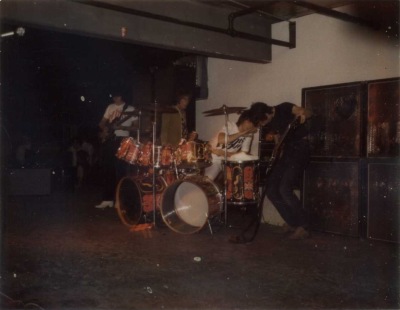 Click to view larger version.10 August 1968, Jaguar Club, St. Charles, Ill., tuning up. One of the earliest known uses of a Gibson SG Special (this one with Vibrola intact); pedal is Dallas Arbiter Fuzz Face; amplifiers are Sound City. (Photo: Rick Giles)
Click to view larger version.10 August 1968, Jaguar Club, St. Charles, Ill., tuning up. One of the earliest known uses of a Gibson SG Special (this one with Vibrola intact); pedal is Dallas Arbiter Fuzz Face; amplifiers are Sound City. (Photo: Rick Giles)For more, see The Who at the Jaguar, 10 August 1968.
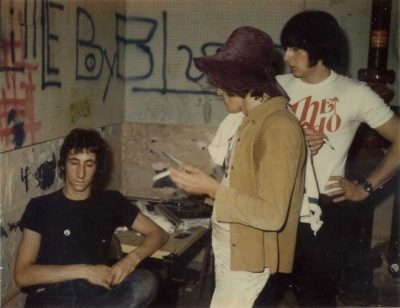
For more, see The Who at the Jaguar, 10 August 1968.
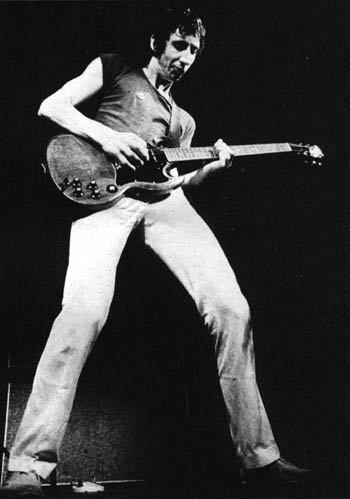
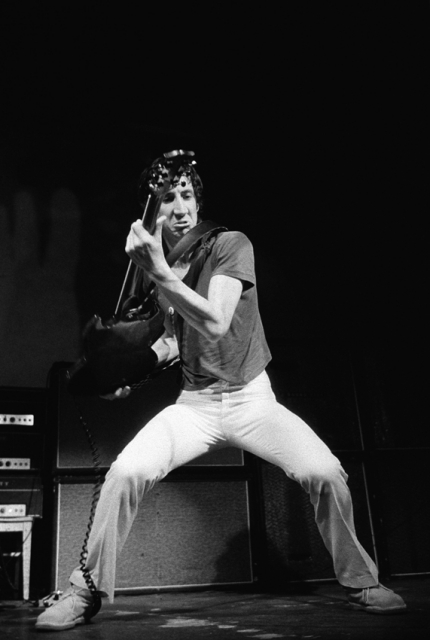
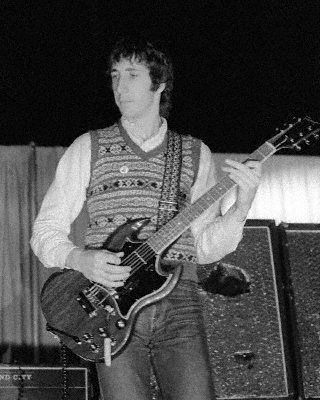
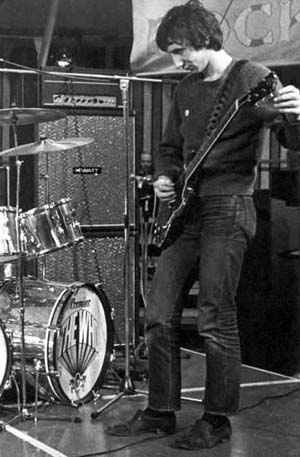
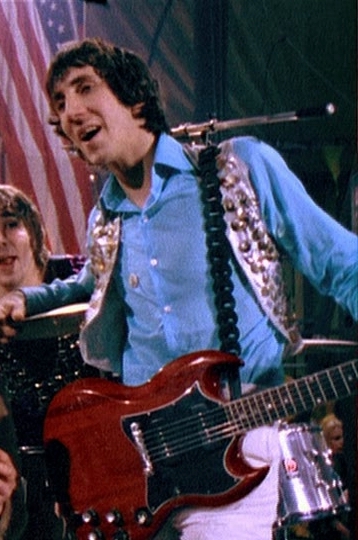
1969
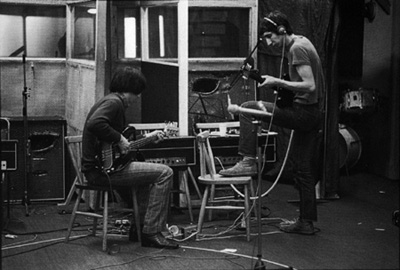
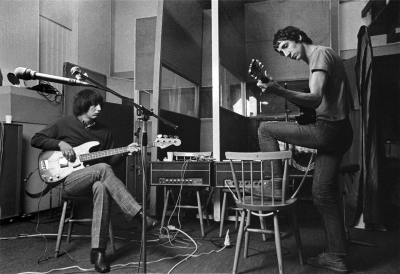
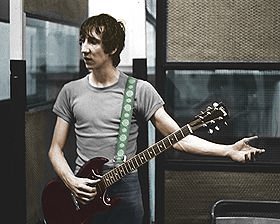
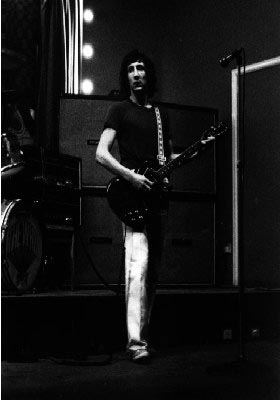
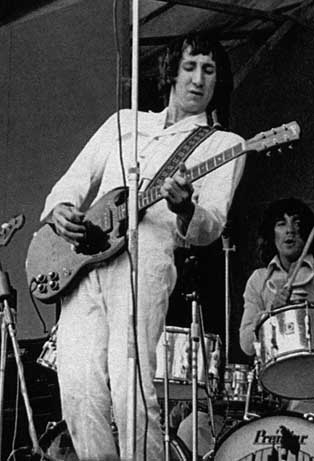
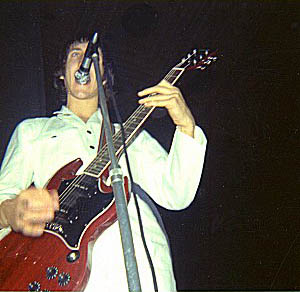
1970
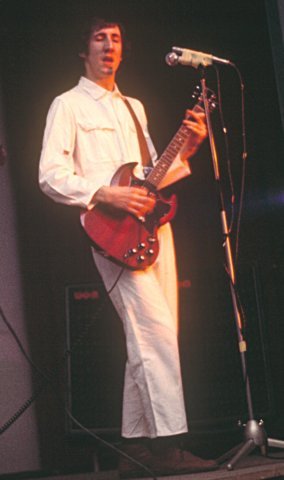
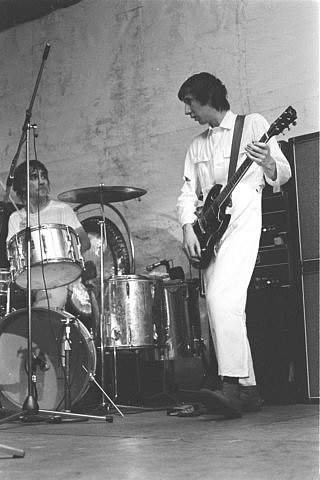
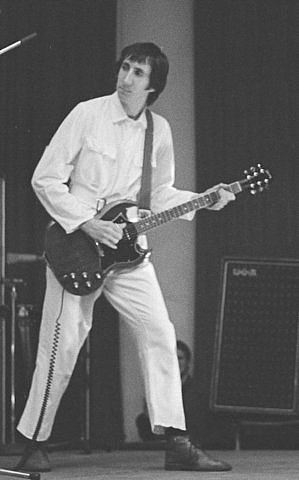
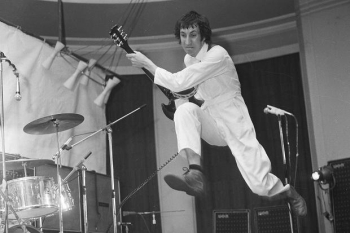
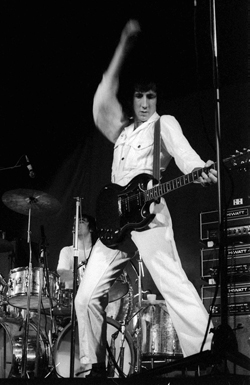
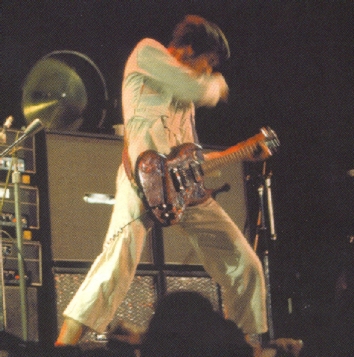
1971
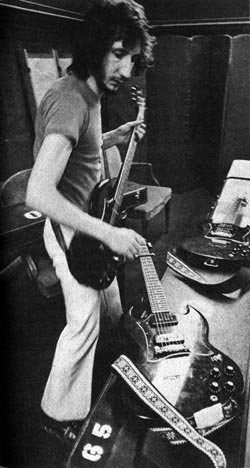
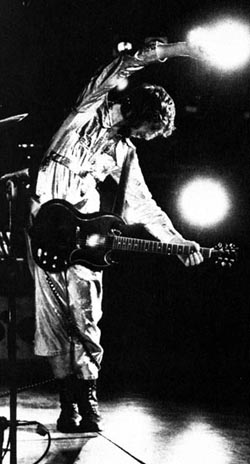
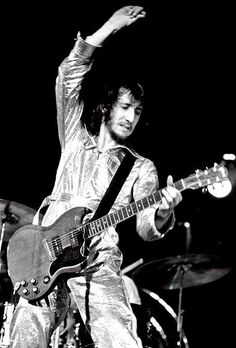
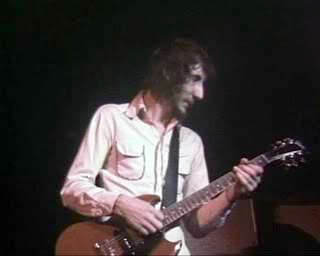
1972
